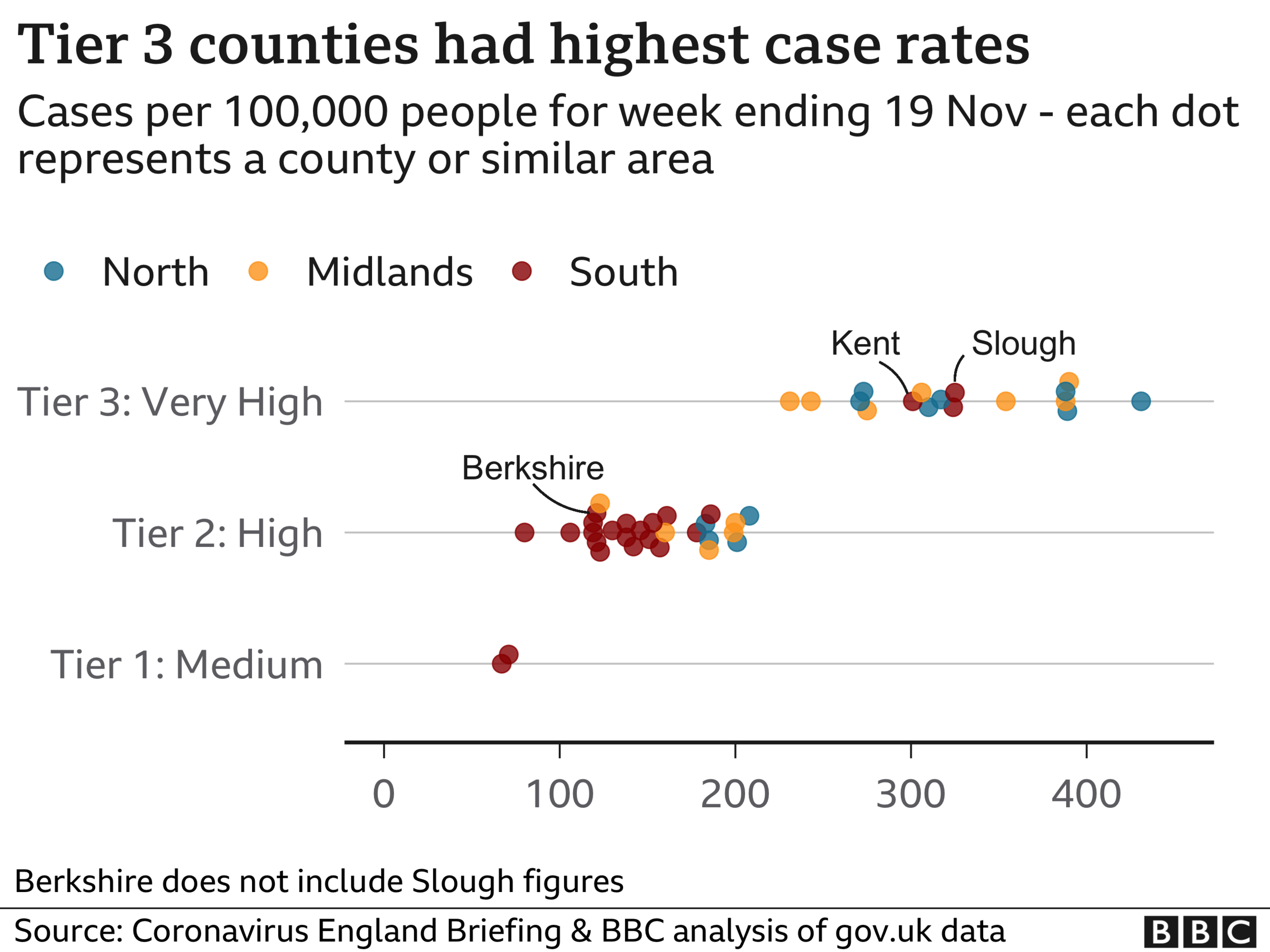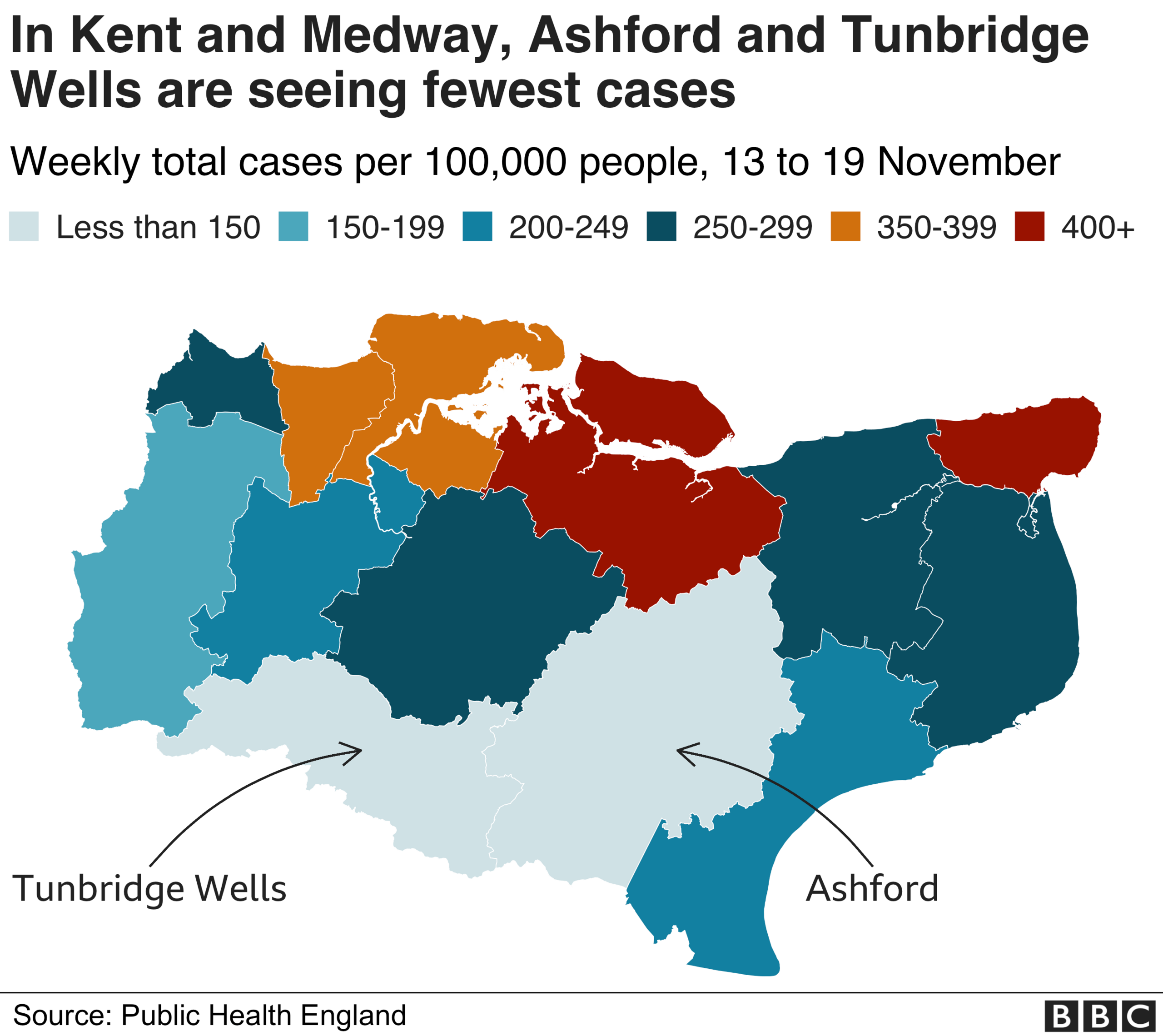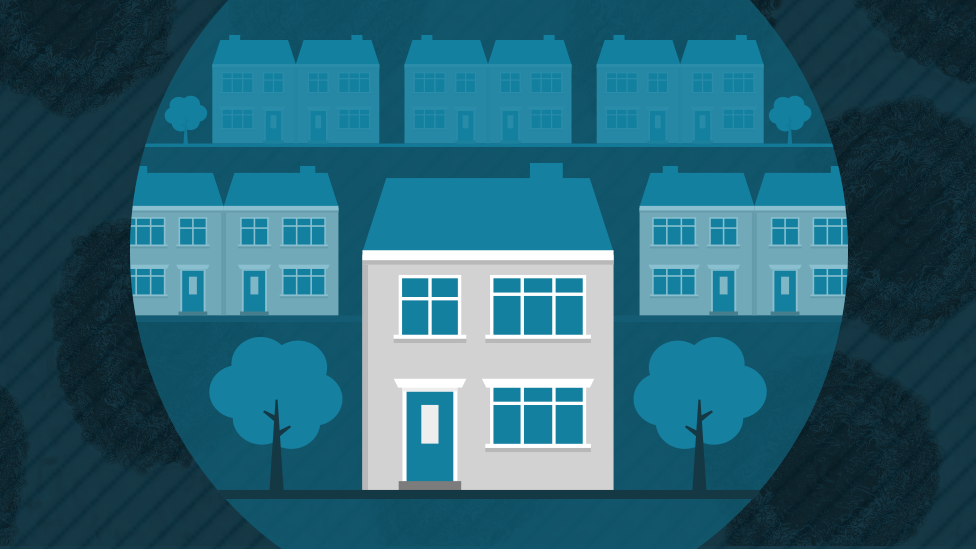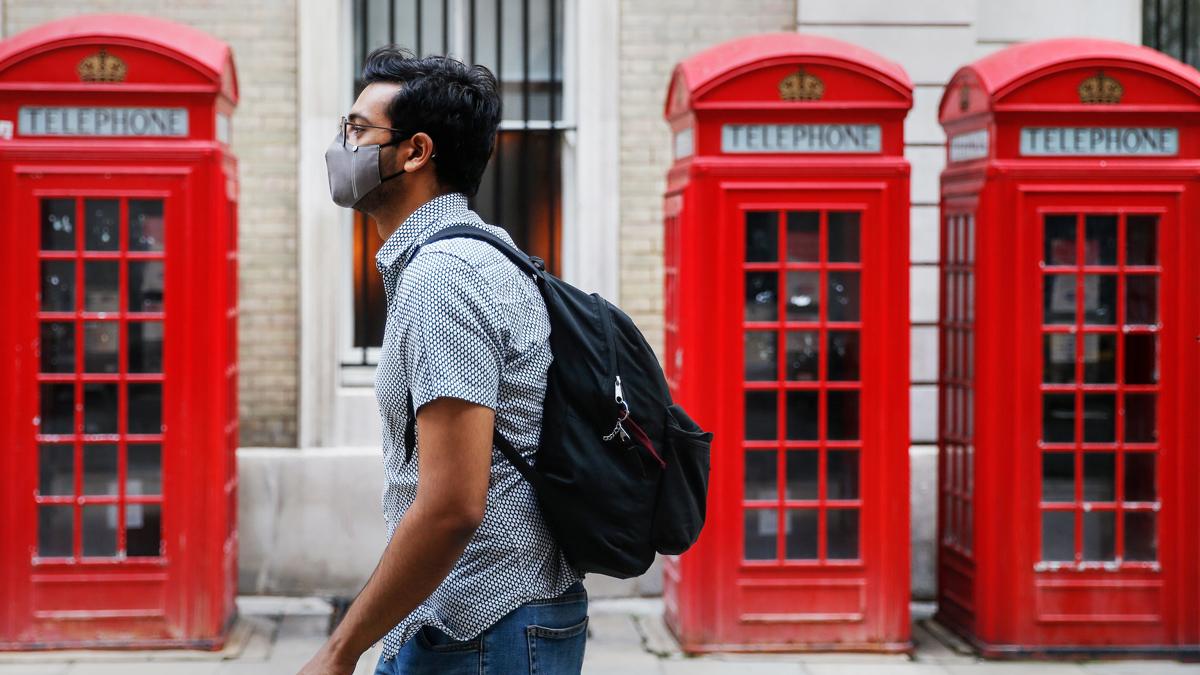Why is my area in a higher tier?
- Published

England's new tiers system has started, but many are complaining areas with lower than average rates of infection have been unfairly put in high tiers.
In the summer, action was supposed to be hyper-local, sometimes with different rules in the same local authority.
But now, tiers have been applied in broad areas, generally matching counties or city regions.
And in those larger areas, the case rates were all higher in tier three than in tier two in the week to 19 November.

The modellers advising government say working on a broader scale "may make measures more effective" since it reduces the chances of people travelling across tier boundaries.
The only exception to the "bigger regions" approach is Slough.
The surrounding parts of Berkshire are all in tier two - but Slough, with a higher rate of infection, has been put into tier three.
The price of this approach is low-Covid areas can be swept up into county-wide restrictions.
For example, Tunbridge Wells and Ashford, in tier-three Kent, had about 120 cases per 100,000 in the week to 19 November.

But most local authorities in England saw more than 180 cases per 100,000 people that week.
The document describing the government's rationale for each decision, external lists four factors on top of the main case rates, however:
the rate in the over-60s
whether rates are rising or falling
whether the number of people testing positive is rising faster or slower than the number of people being tested
the pressure on hospitals
Tunbridge Wells and Ashford have seen rising rates in recent weeks, while the rates in the rest of England have been falling.

And with hospitals in Kent already under pressure, the worry is the high rates of infection in Swale and Medway spread out into the rest of Kent.
But many MPs are still unsatisfied with the government's explanations.
Conservative MP Damian Green, who represents Ashford, asked the government to apply rules at "a local level, districts rather than counties or regions" as "restrictions which people feel are unfair to their particular community will simply not be respected or obeyed".
Analysis by Christine Jeavans, Ed Lowther, Rob England and Robert Cuffe

LOCKDOWN LOOK-UP: The rules in your area
SOCIAL DISTANCING: What are the rules now?
SUPPORT BUBBLES: What are they and who can be in yours?
FACE MASKS: When do I need to wear one?
TESTING: How do I get a virus test?

- Published26 January 2022

- Published1 July 2022
